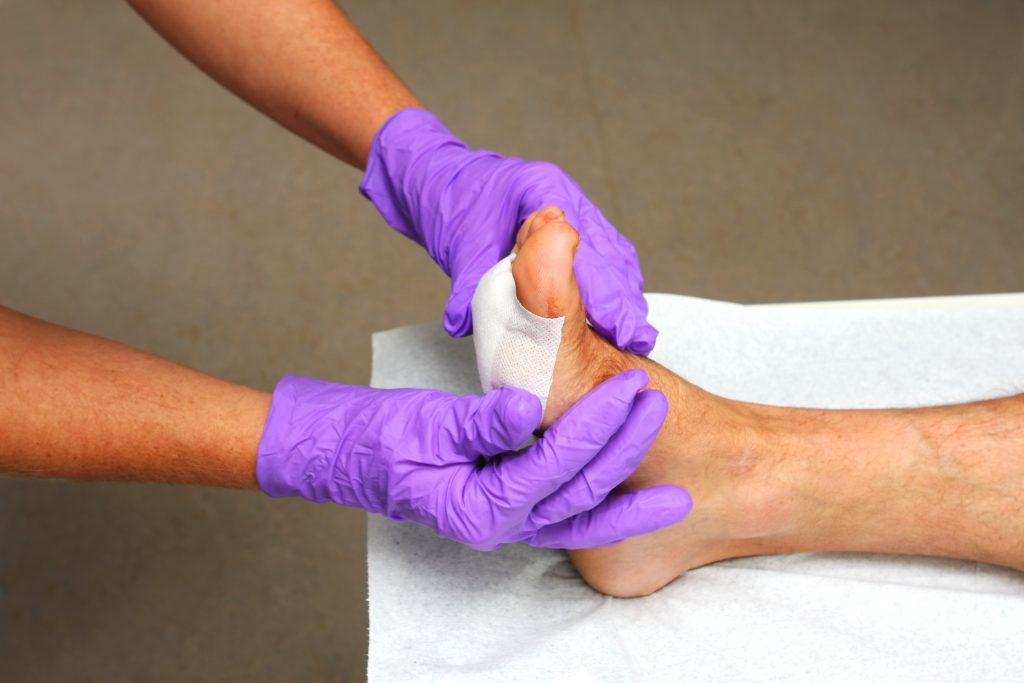The wound healing environment significantly impacts its healing process. Studies have identified several benefits of a moist wound healing environment, including decreased pain, inflammation, and scarring after wound resolution. Moreover, this type of environment minimizes the rates of infection by up to 50% compared to dry treatment. Thus, wound care professionals must ensure optimal moisture levels within wound sites for adequate wound resolution.
What is a Moist Wound Healing Environment?
A moist wound healing environment is one where the wound care professional opts for a dressing that absorbs and leaves some of the moisture in the wound. Other types of wound healing environments include the wet and dry, which are less effective than the moist in the wound healing process.
Before Dr. George D. Winter’s observation in the 1960s on the effectiveness of moist wound healing environments, professionals consistently opted for a dry wound environment approach, which leverages dressings that absorb and eliminate wound moisture. However, a moist wound healing environment minimizes wound infection, tissue dehydration, and cell death.
What Role Does Wound Exudate Play?
Wound exudate is naturally occurring moisture that seeps out of a wound site, offering several benefits, including the provision of growth factors, hormones, and essential nutrients for wound healing. Exudates also provide a medium through which white blood cells can eliminate infections and foreign bodies.
Exudates help the wound maintain the optimal moisture levels required for consistent wound healing, reduced pain, and increased cell growth. Wound care professionals keep optimal levels of exudate in contact with the wound at all times to ensure effective wound healing.
Moreover, exudates are essential for autolytic debridement and recovery time optimization. Optimal exudate levels ensure adequate wound healing. While insufficient amounts lead to drying out, excess leads to surrounding skin maceration and delayed healing.
Causes of Wound Exudate
Injuries to tissues can cause body physiology to respond in several ways, including swelling and the recruitment of protective and repair cells. Wound exudates occur within the initial stages of the healing process.
The amount of exudate is dependent on the extent of tissue damage and other causative factors such as extensive wound damage and the presence of underlying inflammatory diseases.
Creating a Moist Wound Healing Environment
The wound dressing a wound care professional opts for plays a significant role in creating a moist wound healing environment. The professional can ascertain the ideal dressing by assessing the wound and the exudate level.
In addition to selecting the ideal dressing, this assessment informs the professional about the required frequency of dressing changing.
The ideal dressing must be able to remove excess exudate from the wound site and adequately protect periwound skin and wound edges. Additionally, wound dressings must maintain a moist healing environment, improve patient satisfaction, and simplify self-care.
Benefits of Optimized Moisture Levels for the Wound Healing Process
The succeeding subsections describe some of the benefits of optimized levels of moisture within a healing wound:
Reduced Likelihood of Wound Infection
Moist wound healing environments are hypoxic. This nature is generally unconducive to the growth of harmful infectious agents. Moreover, hypoxia promotes the formation of new blood vessels and improves tissue perfusion required for adequate healing.
Collagen Synthesis Stimulation
Collagen material is a key component for tissue repair. Moist wound environments significantly foster the production of this material via fibroblast concentration within the wound site. Faster collagen deposition and wound healing depend on increased fibroblast recruitment to the wound site.
Increased Wound Healing Rates
Moist wound environments expedite the wound healing process by preventing the formation of scabs and crusts, which impede repair material proliferation to the wound site. The absence of these hindrances significantly increases wound healing rates.
Pooling of Growth Factors
Tissue injury and inflammation sometimes lead to the formation of growth factors. Wound fluids are essential for adequately preserving the growth factors, which, in turn, induce appropriate repair cell recruitments.
Wound Site Pain Reduction
Lesser pain at the wound site due to optimal moisture levels encourages patients to adhere to the treatment and prescription of wound care professionals.
Autolytic Debridement Facilitation
Autolytic debridement is essential for wound healing due to the formation of wound site-based necrotic tissues. Optimal moisture levels at the site enhance the breakdown and elimination of these dead tissues with proteolytic enzymes. These enzymes are present within wound fluid during autolytic debridement.
Faster Tissue Repair
A moist wound healing environment comprises keratinocytes, a repair cell type essential for repairing wounded epidermis. Optimal moisture levels at the wound site facilitate the recruitment of this cell to ensure faster tissue repair.
Less Scarring Post-Wound Healing
Adequate wound moisture minimizes inflammation and promotes rapid recruitment of repair materials during the wound healing process. Consequently, moist wound environments maximize the efficiency of the process and leave less scarring.
When to use a Different Approach
Although optimized moisture levels are beneficial to the wound healing process, they remain unsuitable for certain types of wounds. For instance, when moisture accumulates under the dressing, patients with gangrenous diabetic foot ulcers tend to experience a progression from dry to wet gangrene.
Wound care professionals must opt for dressings that minimize moisture to avoid excess moisture levels and the resulting skin maceration and delayed healing.
Moreover, moisture is unsuitable for malignant fungating wound patients with dry scab coverings since the scab aids wound stabilization. Creating a moist wound environment, in this case, can significantly impede the wound healing process.
Bottom Line
Moist wound environments offer several benefits to patients. However, professionals must maintain an optimal wound moisture content to avoid the formation of scabs and crusts, prevent skin maceration, and, ultimately, impair the wound healing process. It is noteworthy that moist wound environments are unsuitable for certain wounds, including gangrenous diabetic foot ulcers and malignant fungating wounds.



.webp)

.avif)